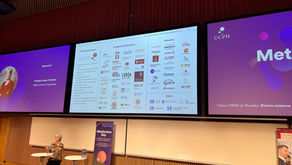

SysMito
Systems biology based analysis of mitochondrial metabolism as a driver of inflammation in cardiovascular disease development (SysMito) (2024-2026)
Project No. 5,2,1,1.i.0/2/24/I/CFLA/005
Source of funding: financed under the European Union's Recovery and Resilience Facility and the national budget
Project period: 01.04.2024. – 31.03.2026. (24 months)
Total budget: 200 000 EUR
Project coordinator: Egils Stalidzans
Objective:
SysMito project aims to apply systems biology methods to identify and quantify in form of mathematical models’ inflammation related metabolic processes that can be used identifying rational CVD treatment strategies.
Summary:
Atherosclerotic cardiovascular disease (CVD) is a leading cause of mortality and disability globally. In the initial phases of CVD, crucial events such as inflammatory activation, endothelial dysfunction, lipid profile changes, and oxidative stress occur. These disruptions are intricately connected to mitochondrial dysfunction, suggesting it as a pivotal factor in atherosclerosis development and a potential target for novel therapeutic interventions or diagnostics. A substantial amount of longitudinal omics data has been collected on CVD-related inflammation processes, leading to various hypotheses that occasionally contradict each other.
The project aims to apply systems biology approach studying the inflammation process, through constructing mechanistic mathematical models to simulate molecular interactions, transport, and other processes. This approach facilitates the extraction of additional knowledge about molecular interaction mechanisms from available data sources and confirm or reject different hypotheses about mitochondrial role in inflammation. Publicly available multi-omics data will be integrated in genome scale constraint based stoichiometric models and pathway scale kinetic models.
The obtained mechanistic models can be further used for the development of treatments and therapies to control CVD related inflammation processes targeting mitochondrial metabolism or it’s control networks.
The project has started recently and is currently being implemented. Project results will be published.






